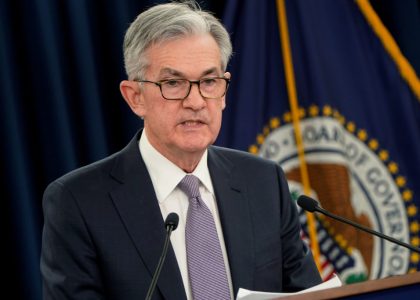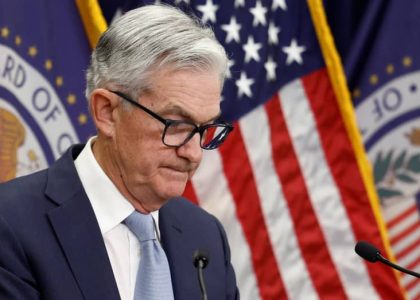There are times in any endeavor when the stars align and the proper course of action is as clear as a bell. We've all had our moments when even we knew we, "were on a roll." However, most of life's endeavors and their eventual successes come simply from the honest trudge of hard work and dedication to a specific task. This explains the late 2015 early 2016 success as many of the commodity market were displaying classic commercial trader group clues which we discussed frequently in our Commitment of Traders analysis. This led to catching several of the market rallies like the metals, energies and grains. However, as these moves have disconnected over the last month or so, the next set of predictions becomes much more difficult. This week, we'll look at the issue of profitable trading via mechanical programs while using the interest rate sector as a barometer for the general markets' confusion as the global rate picture remains one of the biggest variables.
Setting the stage back towards the end of 2015 we began to comment on the continuing contraction in the spread between the 10-year Treasury Notes and the 30-year Treasury Bonds. This consolidation was bound on the topside by the trend line dating back to the old all-time high in the T-Bonds made last January. The consolidation was supported by the trend line dating back to the July 2015 low which was forged by the Federal Open Market Committee's dovish tone near the market's lows. This helped push the already large commercial traders' net long position to its highest level in more than a year and still holds as the market's low since that time. Finally, commercial traders set one more new high in their net long position late last November and this led to the last leg of the current rally.
The long-term rates tend to lead the short-term rates. Therefore, when the Bond minus Note spread began to break through the topside of the resistance in the spread chart below, it was just another confirmation that the commercial traders were going to drive Long Bond prices higher and yields, correspondingly lower. This is the classic relationship between short and long-term interest rates that provides the data points for the yield curve's shape. Therefore, when the discussion focuses on a flattening yield curve, as it has from December through February, the spread in price between the two products gets wider as their yield spread narrows. A flattening yield curve is a sign of weakness in a deflating economy. Conversely, a steepening yield curve occurs when the price between these markets narrows and the yield spread widens. This is a sign of an economy that is heating up.
The confounding issue in the spread chart below is that the move towards a flattening yield curve as the spread has widened to all-time highs flies in the face of an inflationary commodity rally. While part of this can be explained through broadening negative interest rate policies pushing money into other forms of investment like commodities, I can't believe it accounts for much of the total recent investment. Therefore, I believe the markets are trying to determine if the FOMC thinks the domestic economy is strong enough to carry the world through this period of global weakness just as China carried much of the world through the global collapse of '08-'09.

Here's where things get difficult. At the same time that the interest rate sector was signaling an economic slowdown, many inflation sensitive commodities were signaling a rally. At this point, a discretionary trader can choose to take a caucus, giving each market a vote to determine the inflation/deflation play or, the discretionary trader can narrow their choices to the markets in which they feel the most conviction. Either way, it comes down to judgment calls and a level of, "feel." Finally, a discretionary trader could simply choose not to participate until a greater level of clarity is achieved.
There is another approach to the same scenario. Mechanical trading, while at times, inefficient, can provide a statistical edge covering multiple markets based on the same overall premise. Mechanical trading can be inefficient because the trading programs are designed to capture a given set of circumstances that fit particular criteria. Therefore, in the confounding situation of inflation or deflation at a point in time when the world's biggest traders are making their biggest bets, the mechanical approach assumes that the trader would take each signal in each market. Overall money management and the brute force of the underlying premise and the conditions it presents should ensure profitability. In this case, the portfolio of mechanical interest rate trades eliminates the daily deciphering and assimilation of data and corresponding modification of the underlying schema.

Let's look at the big picture charts to illustrate the degree of confusion between the markets and the talking heads. It is the disconnect between what the eyes see on the charts versus what the ears pickup in the background that leads to confusion and its associated trading pitfalls. The weekly 10-year Treasury Note chart below is as benign as they come. Other than the highs set in January of both 2014 and 2015, both of which led to first quarter rallies, there's nothing remarkable about the chart. Even the 2012 commercial trader net position low is nowhere near their max of more than 500k contracts.

Now, when we compare that to the 30-year Treasury Bond chart below, the confusion becomes clear. The Long Bond gave several clear clues and is currently speaking up once again. The commercial trader population is now net short more than 58k contracts, nearly the most since their all-time net short record of 84k contracts set in 2012. Therefore, while the 10-year chart looks benign, the 30-year chart looks downright frightening.

Commercial traders have been very active and their actions have been very predictive of the underlying futures contract's movement. Note the consistency in the effects of their buying surges including the record position created in late 2014, which led to all-time highs before the end of that year. The current situation however couldn't be more different. Their current net position is much nearer their bear record total of 84,000 contracts than it is their net long total in 2014 of more than 265,000 contracts. Both of these opportunities provided the clear trading signals we look forward to using this approach. However, the current situation in the Long Bond clearly illustrates the commercial traders' collective conviction that long-term interest rates are headed higher. How do we assimilate this within a plan that includes a growing contingent of first-world economies moving towards negative interest rate policies?
This is why my mechanical trading plan has become a bigger and bigger part of my total trading. I can implement the program built around a given set of technical circumstances and based upon the fundamental tenet that as a rule, the commercial traders know their market better than any other category in the COT report. Furthermore, their actions are quantitatively predictive of the underlying commodities' movement. Therefore, when the markets disagree, I don't have to trade. However, because I am a professional trader, I do have to trade. Mechanical trading programs allow me to back out gracefully when I'm confused while still providing investment exposure in a way that fits my historical analysis.






